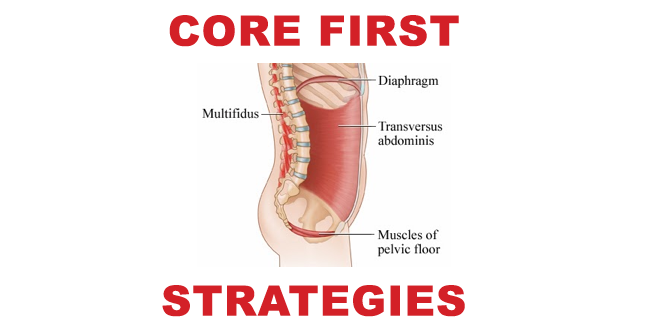Our bodies take a beating day after day, week by week, year by year. Symptoms associated with back and neck discomforts are incredibly common. In my career I have seen all too often that people approach pain by saying "well, this is how it is and how it will always be". Nothing is more painful to your physical therapist's ears than this!
There are solutions! There are ways! There is hope for you! It seems the most popular trend in managing back pain based on recent research is "USE YOUR CORE". What is your core? How do you turn on your core? Your core is made up of four groups of muscles that form a drum, or cylinder around your trunk. The "core" is compromised of segmental muscles that attach from one vertebra to the next. Its base is known as your pelvic floor, and its ceiling is your diaphragm. The focus of this grouping of muscles is to decrease force through the spine. Because of the segmental nature of these muscles, the core can assist in spreading force outward as opposed to allowing compression. Now that we have some base of knowledge on these muscles we and their function, how do we make them work?
These muscles are not easily isolated. Bummer. However, if we focus on some basics of mechanics and positioning they will fire automatically without focusing on contractions. These are some basic strategies to focus on:
- Base of support: Your core first response begins from your base. Whether you are standing or sitting, your trunk is best supported by a hips width base with appropriate weight through your feet
- Alignment: Focus on a neutral spine alignment. Everybody's neutral spine is different. This should be a position of comfort that is neither flexed (slump) or extended (overly arched). Your core muscles do not function outside of neutral! This is a very important principle. To assure you are maintaining neutral, focus on mobility through the axis of your hips. A strategy we call hip hinging.
- Weight shift: Combining the above mentioned principles, weight shifting allows for efficient movement within your base of support without changing your spinal alignment. For example, In the case of shoveling 30 inches of snow, allow your weight to transfer from rear foot to front foot as you work toward removing snow. This will eliminate the need to bend from your back.
Following these 3 simple principles can make an enormous difference in managing acute to chronic back and neck pain. For any questions regarding this content please feel free to reach out to me via email at Robert@northislanpt.com. Also remember, North Island Physical Therapy offers free functional screens which gives you an opportunity to sit down with a therapist and discuss wellness related issues that you may be dealing with.


